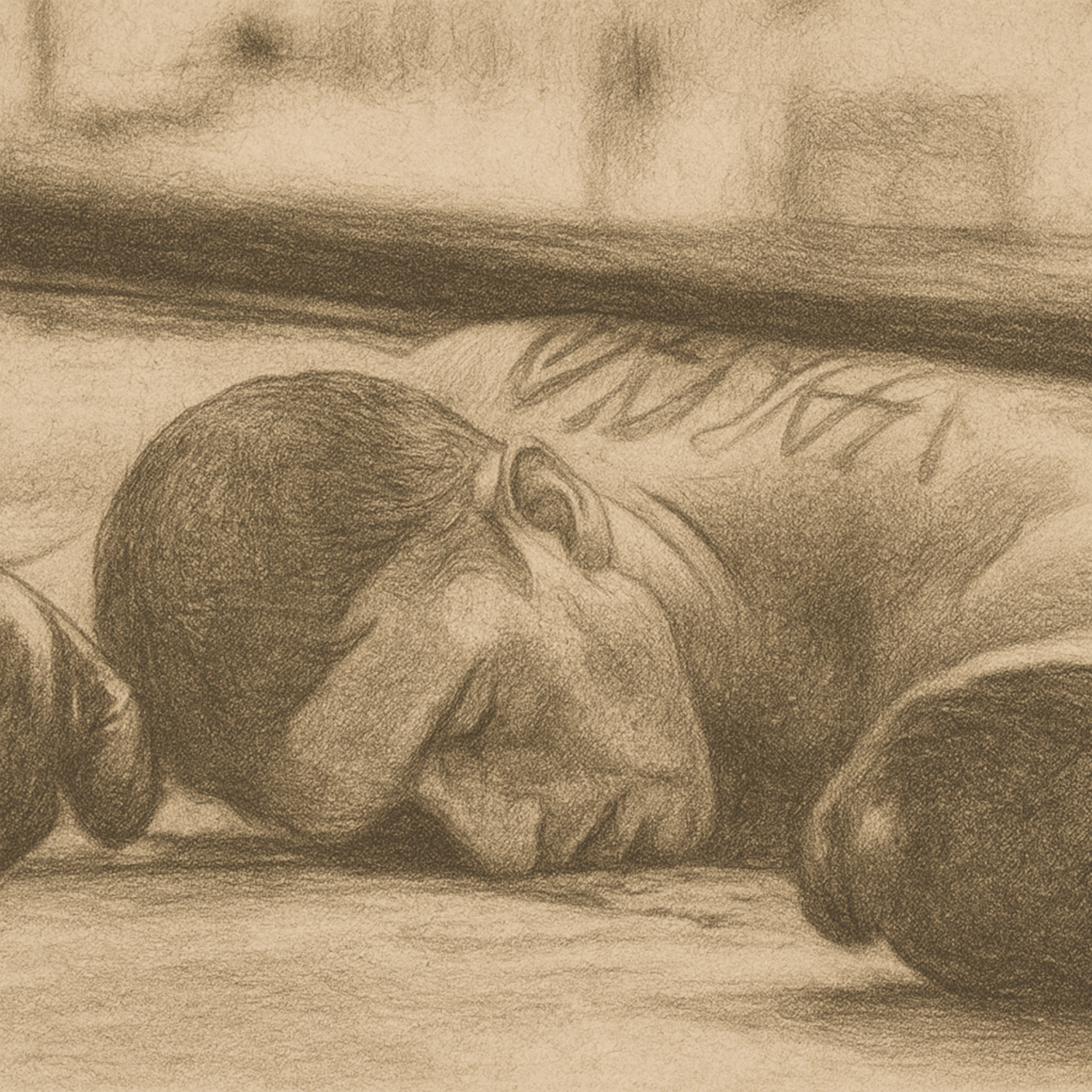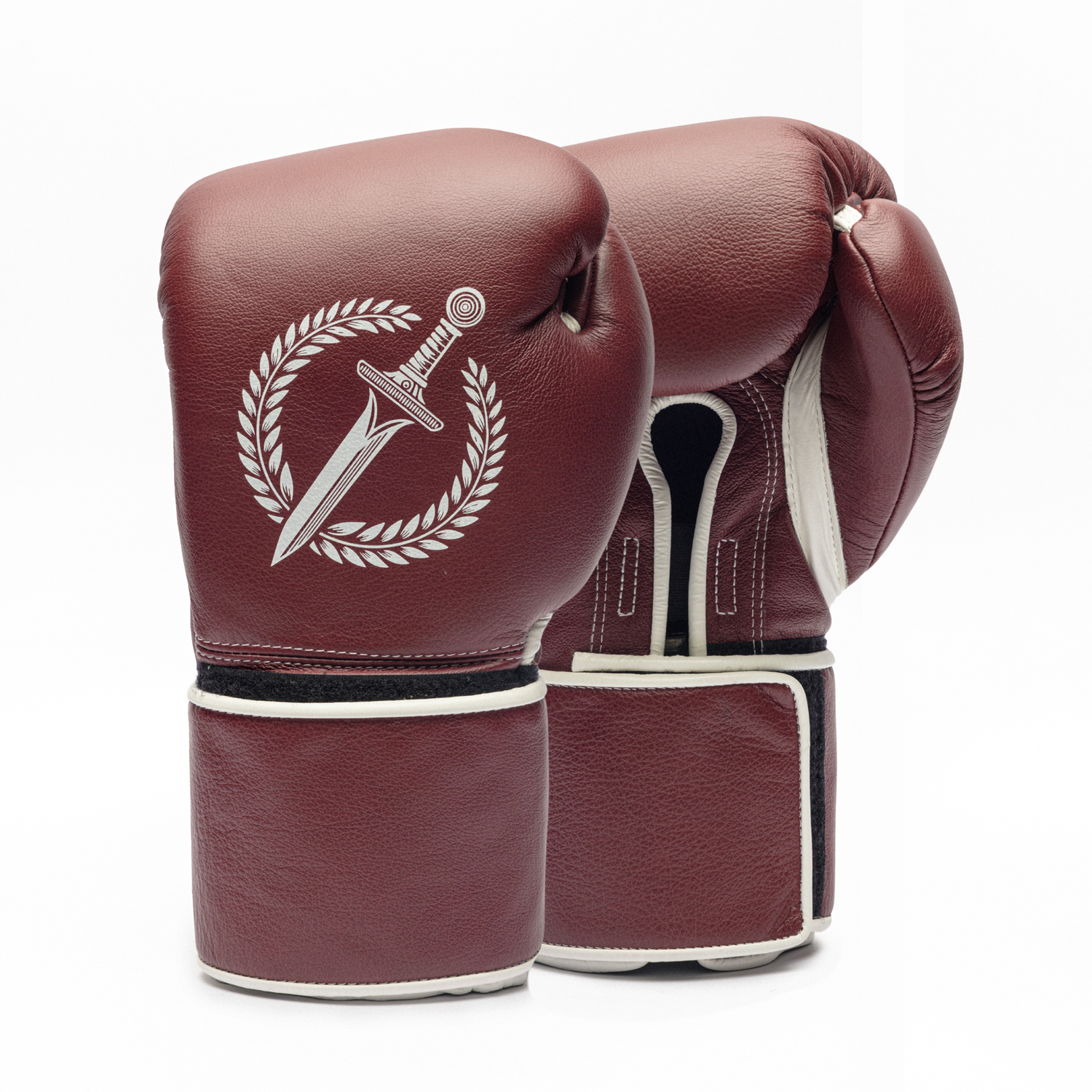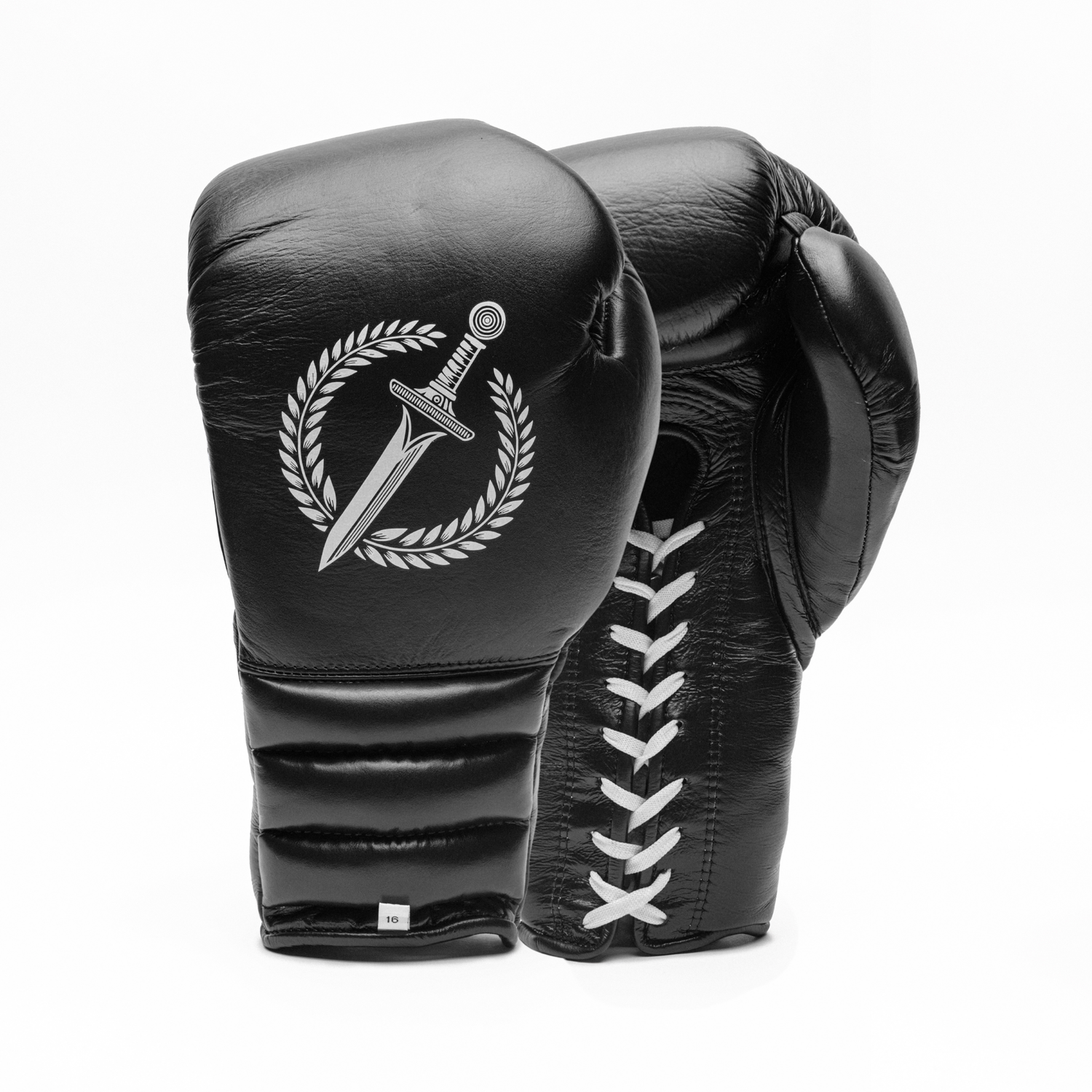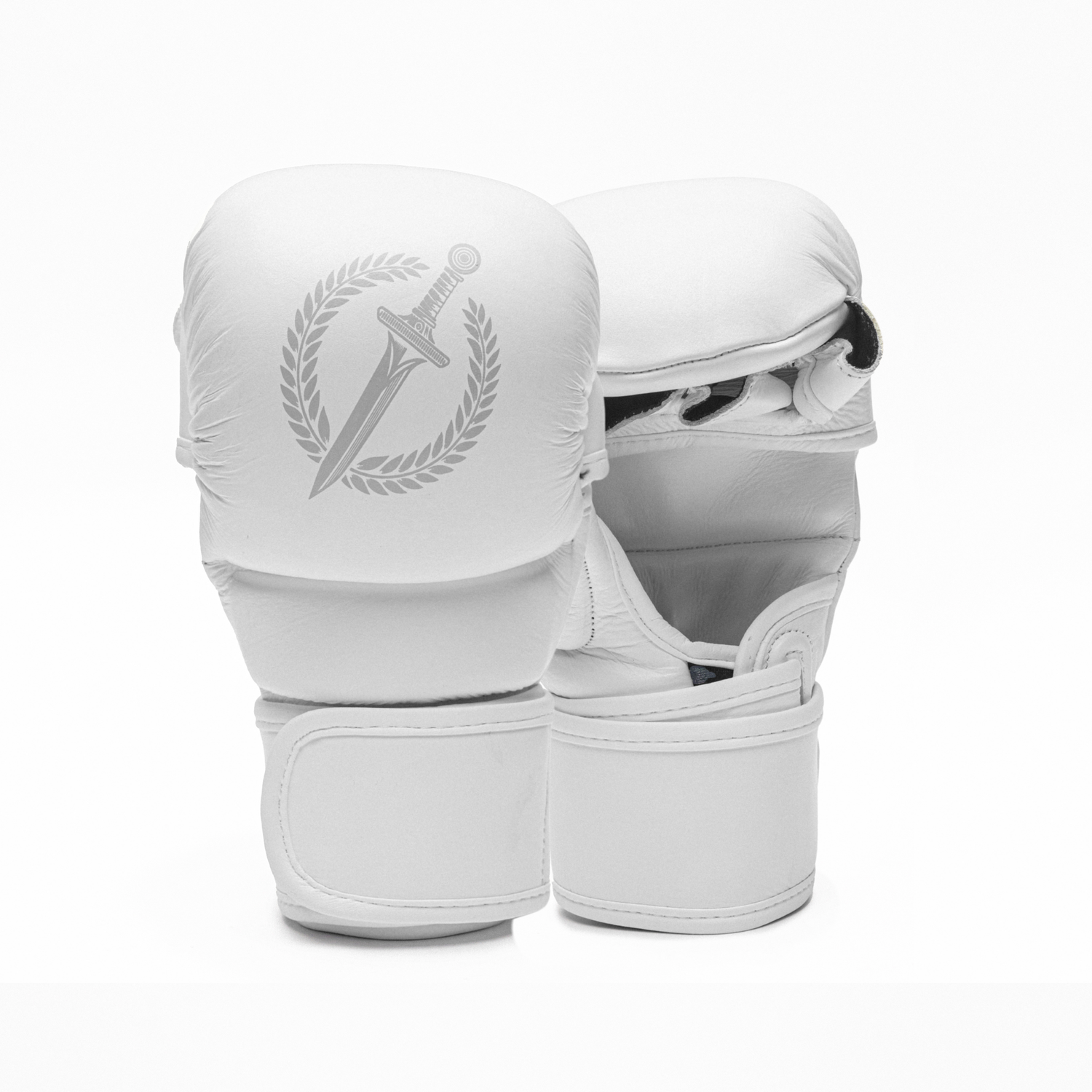Injuries are part of the risk inherent to combat sports. There's hardly a fighter out there who doesn’t have an injury story or hasn’t seen it happen in the gym.
Although they’re common, injuries can’t be taken lightly and must be treated seriously. Whether you're throwing punches in boxing, drilling kicks in Muay Thai, or rolling through rounds of MMA sparring, knowing how to protect your body is essential for long-term performance.
The good news is: there’s a lot you can do to prevent injuries, or at least lessen their impact when they inevitably come. Here’s a breakdown of the most common training injuries and what you can do to prevent them.

Wrist and hand problems are the most usual type of injury in the boxing community.
1. Wrist sprains & hand injuries
Common in: Boxing, Muay Thai and MMA.
Whether you're hitting the bag, catching elbows, or landing punches at awkward angles, your hands and wrists take a beating. Improper technique or poor glove support can lead to sprains, fractures, or chronic pain. Some of the most known injuries are: boxer's fracture (fracture of the 4th or 5th metacarpal), wrist sprain, tendonitis, dislocated fingers and TFCC injury.
Prevention Tips:
-
Use high-quality gloves with proper wrist support. A well-padded, secure glove (especially lace-up for wrist issues) can make all the difference.
-
Use heavier gloves (14-16oz for boxing, L for MMA) for high-impact training on the heavy bag and sparring.
-
Always wrap your hands correctly.
-
Avoid overextending punches.
-
Strengthen wrist and grip muscles in the gym. Exercises such as farmers carry, wrist curls and plate pinches are very helpful.
-
Focus on clean, aligned technique, especially when tired.
-
If you have very sensitive hands, look for gloves with softer "pillow-like" padding. They will have less punch feedback, but will protect your knuckles and wrists.

Shin bruises are a popular injury in the Muay Thai community.
2. Shin bruises & microfractures
Common in: Muay Thai, MMA.
Repeated kicks against pads, bags, or sparring partners can take a serious toll on your shins, especially in the early stages of training. Beginners often experience sharp pain, visible bruising, and swelling after heavy conditioning work.
With time, your shins begin to adapt. As microtrauma builds up, they slowly calcify and harden, reducing pain and increasing durability. This process is known as “shin conditioning.”
Prevention Tips:
-
Don’t overdo kicks early on. Build your endurance gradually.
-
Use shin guards during sparring and drilling.
-
Ice and rest your legs after heavy kicking sessions.
-
Learn proper shin rotation to maximize surface impact.

Shoulder issues are a problem many volume fighters face.
3. Shoulder strain or rotator cuff injuries
Common in: Boxing, Muay Thai, MMA.
Your shoulders are involved in almost everything: punches, frames, clinch control. Overuse or poor mechanics can quickly lead to rotator cuff inflammation, impingement, or long-term strain. This is especially common in the lead shoulder, where constant jabbing without proper recovery or strength work can cause what many fighters call the infamous "jab injury."
Prevention Tips:
-
Warm up shoulders thoroughly before training.
-
Strengthen your rotator cuff with targeted gym exercises.
-
Avoid over-punching without rest.
-
Maintain proper form when throwing high-volume combinations.
-
If your shoulders feel painful or tight, take time to rest and recover.

Knee injuries are a popular occurrence among BJJ practitioners.
4. Knee Injuries
Common in: Muay Thai (clinch & kicks), MMA (shoots, takedowns and submissions).
Knees are a primary target in both striking and grappling: from the infamous oblique kick in MMA to submissions like knee bars and heel hooks. Without proper control, awareness, and strength, knee injuries can be serious and long-lasting.
Prevention Tips:
-
Drill takedown defense and kicking technique with good form.
-
Tap early, especially on knee bars and heel hooks.
-
Agree on a list of "off-limits" techniques with your sparring partners. Moves like oblique kicks, heel hooks, and jumping submissions carry a high risk of knee injury. Unless you’re preparing for high-level competition, they may not be worth the danger.
-
Avoid deep squatting during kicks if not flexible enough.
-
Use knee pads in hard sparring if you’ve had prior issues.
-
During grappling scrambles, avoid erratic or spazzy movements. If you’re stuck in a pin or bad position, focus on finding a technical escape instead of muscling your way out.

Head trauma must always be checked by a physician. You only get to have one brain for your lifetime.
5. Concussions & Head Trauma
Common in: Boxing, Muay Thai, MMA.
Even in controlled sparring, repeated blows to the head accumulate over time. Long-term effects are serious, so protecting your brain must always be a priority.
Prevention Tips:
-
Use headgear, mouthpiece and heavy gloves in sparring. Most serious gyms have a policy of minimum 16oz for boxing/Muay Thai and hybrid large gloves for MMA.
-
Spar with partners you trust.
-
Take time off if you feel foggy, dizzy, or have headaches after training.
-
If you get knocked down or knocked out during training, don't brush it off. See a physician to evaluate for any serious damage.
- Avoid over-sparring. Less is more.
-
Be very selective with your hard sparring. It is better - for your brain and for your skill - to do more rounds of light sparring and only occasionally a hard session.

Ankle issues are no-news to the fight community. This is an area of high-impact in almost all disciplines.
6. Ankle rolls & foot injuries
Common in: Muay Thai, Boxing (footwork), MMA (scrambles).
With so much pivoting, shifting, and exploding off your feet, rolled ankles or foot bruises are common. Common injuries are: Achilles tendonitis, toe sprains, foot bruises, mat burns and ankle sprains.
Prevention Tips:
-
Strengthen your ankles with balance and stability drills.
-
Stretch calves and achilles tendon daily.
-
Use ankle supports if you’ve had previous injuries.
-
Practice controlled pivots during shadowboxing.
-
If you tend to land kicks with your foot instead of your shin, avoid throwing them at full power.
- Tap early to foot locks.

Fighting is good for many things. Posture is not one of theirs.
7. Lower Back Pain
Common in: All combat sports.
Whether from poor posture, tight hips, or explosive movements, lower back strain can build up over time.
Prevention Tips:
-
Strengthen your core and glutes.
-
Stretch hamstrings and hip flexors daily.
-
Maintain good posture when punching or clinching.
-
Avoid heavy twisting movements if your back feels tight.

Badge of honor or something to avoid? Cauliflower ear is up to personal decision.
8. Cauliflower Ear
Common in: MMA (especially in grappling training) and Muay Thai (clinch work, although not very often).
This happens when repeated or blunt trauma to the ear causes blood to collect under the skin, leading to swelling and hardening if left untreated. It’s common in grappling-heavy training or clinch-heavy sparring.
Prevention Tips:
-
If you want to prevent it 100%, wear headgear during intense grappling or clinch sessions.
-
Drain early if swelling appears. Go to an ENT and get it drained by a professional to avoid any fluid to build up again or infections.
-
Avoid direct trauma once swelling has started. Take your time to go back to the mats.
-
Don’t ignore small ear bruises. That’s how it often begins.

Corneal abrasions are no joke. It may take up to 3 days of intense discomfort to fully recover.
9. Eye injuries (Corneal abrasions)
Common in: MMA.
Accidental eye pokes can cause corneal abrasions, vision blur, and even long-term eye damage. They happen most often in sparring when hands are open or during fast exchanges.
Prevention Tips:
-
Always strike with closed fists or controlled hand frames.
-
Wear MMA gloves with good finger compartment structure, such as Gladius.
-
If you get poked in the eye, stop sparring or training immediately. Avoid rubbing it or touching it with sweaty hands, as this can make things worse.
-
Train with partners who value safety and awareness.
- If you’ve suffered a corneal abrasion, take at least 7 full days off from training to allow your eye to heal.





